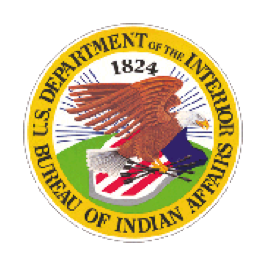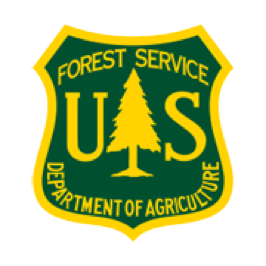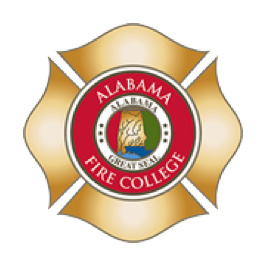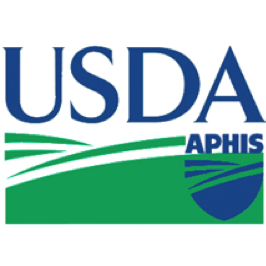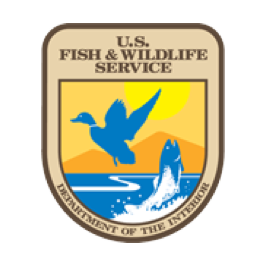Shoalwater Bay Tribe Declares State of Emergency on Invasive European Green Crab
Invasive European Green Crab in Willapa Bay
Rich Ashley & Larissa Ritzman, Shoalwater Bay Natural Resources Department
Download Press Release
Willapa bay is a habitat rich environment for many different species of animals that provide for not only the local population but also the world due to the vast biodiversity within the bay. The biodiversity of Willapa Bay is now under attack by the European green crab and its booming population.

European Green Crab captured during a trapping set in September. Photo credit: Ritzman
The European green crab (Carcinus maenas) is a small shore crab whose native distribution is in the northeast Atlantic Ocean and Baltic Sea, ranging along coasts from northern Africa to Norway and Iceland. The green crab live in the intertidal zones of the estuaries they inhabit. Historically WDFW documented green crab in the late 1990’s within Willapa Bay. Monitoring and trapping ceased until 2015 when Sea Grant again monitored previous sites. Shoalwater Bay Indian Tribe became involved in 2020 with trapping and development of a Sentinel site for monitoring on Tribal land.

Early morning Tokeland trapset. Photo credit: Ritzman
When trapping first began in Tokeland, the thought was that green crab would be present in low numbers and that Willapa Bay would be a site where green crabs would not have established a strong population because of the hydrologic morphology within the bay. Willapa Bay has one of the largest tidal prisms, more than 10 billion cubic feet, of all inlets on the coast of the continental United States (Michalsen, 2018). The first major trap set in 2020 was done in the first week of September and 503 crabs were caught with 105 traps. At the time these numbers were thought of as high numbers with an effort of 4.79 crabs per trap. After that trap set it was determined that there was certain green crab “hot spots” or areas that the population was greater and that trapping would continue into 2021. Throughout 2021, Shoalwater Natural Resource staff have trapped multiple times for a total of 535 traps deployed that have caught 5,965 green crab. This equals an effort of 11.14 green craps per trap. The most effective traps are shrimp pots that multiple times have been pulled in with over 100 green crabs. The population seems to be rising and this could become a major problem in Willapa Bay.

Green crab in shrimp pot. Photo credit: Ritzman
The green crab is an effective predator, adept at opening bivalve shells, and has been blamed for harming the soft-shell clam industry on the U.S. East Coast. The green crabs are also very aggressive for their size. Studies are still being conducted to see what the green crabs are eating locally to find out the extent of devastation they are causing within Willapa Bay. It is believed that the green crab feeds on many organisms, including clams, oysters, mussels, marine worms, and small crustaceans. Because they can prey on juvenile crabs and shellfish the Dungeness crab, clam, and oyster fisheries of the area could be at risk, and the green crab might also compete with native fish and bird species for food. In addition, the green crab is an intermediate host to a marine worm that can harm the health of local shorebirds.
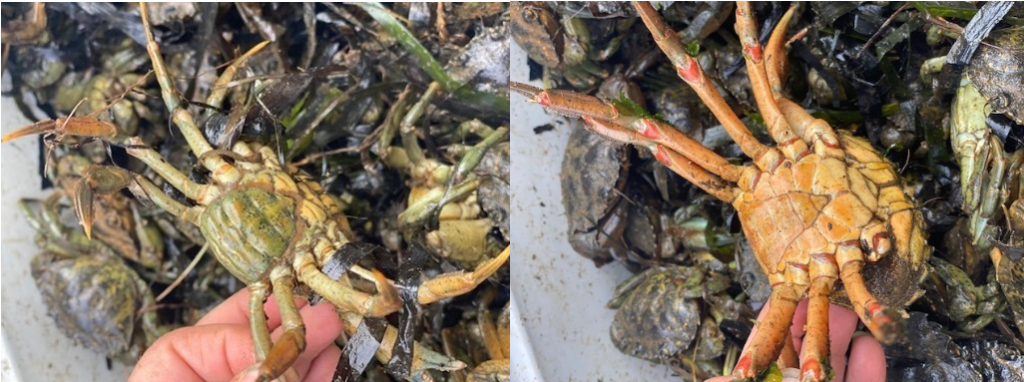
Female ( left) and Male (right) Green crabs. Photo credit: Ritzman
From firsthand experience, it seems where green crabs are observed in high numbers, all other native species of crabs and fish alike have disappeared or are being seen in much lower densities. This is becoming a great concern and could have long-term destructive effects on not only the biodiversity of the bay, Tribal member gathering efforts, Tribal fishing, cultural resources and many other locals that are supported in business or through intrinsic connection to Willapa Bay. The Natural Resource Department is pursuing long term funding to expand the trapping and removal program. We have requested and been approved for a small grant from the Pacific County Marine Resources Committee to fund purchasing of more trapping supplies and gear. We are working to remove as many crab from the system as possible. Currently we are recycling these crabs to the Tribal community garden, where they are buried and composted.
Recently the tribe signed a state of emergency due to the high numbers of green crab continually being caught. The state of emergency means that tribal council acknowledges that the green crab is a major problem. The state of emergency also helps with applications for funding for the removal of green crab and also helps us spread the word of green crab to the public that might otherwise not hear about it.
Resource managers said those who find a live green crab or its shell in the area should contact them and report, but leave the crab in place to avoid accidentally killing native crabs. It is illegal to possess a live green crab in Washington to protect native crabs from cases of mistaken identity. If you have any questions, please reach out to Natural Resources.
Shoalwater Bay Tribe Natural Resources Department
Larissa Ritzman – 360-267-8108, [email protected]
Rich Ashley – 360-267-8110, [email protected]
